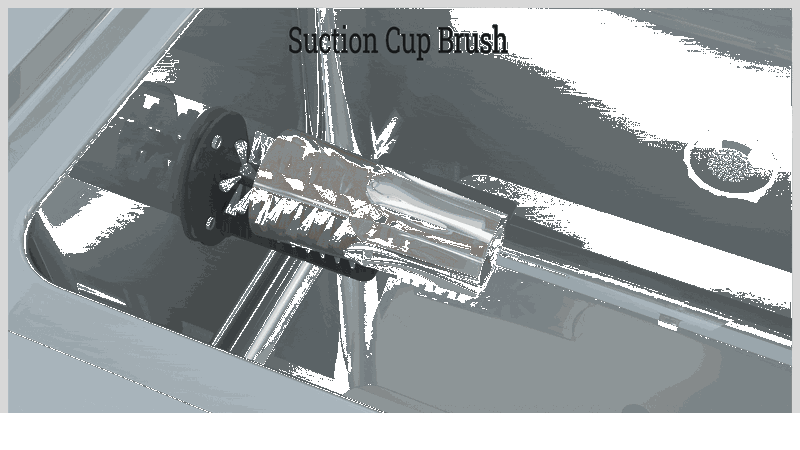Introduction
This article provides an in-depth exploration of commonly used brush types:
It covers detailed information on various topics including:
- Brush definition
- Different brush categories
- Additional relevant information

Understanding Brushes: An Overview
Most people imagine brushes as tools with handles and filaments, but their diversity makes comprehensive classification challenging due to varying types, designs, styles, and applications. Common tasks like house painting require selecting specialized brushes for different purposes. For wallpaper removal, a wire brush proves effective, while painting brushes come in angular, flat, or pointed designs ranging from quarter-inch to five-inch widths.
While this overview focuses on standard brush types, numerous specialized varieties exist including makeup, tar, automotive, archeological, tooth, and preservation brushes. This ancient yet evolving tool has become deeply integrated into modern society. Manufacturers continually innovate with new brush designs annually, transforming what appears to be a simple tool into countless forms and categories.
Although handle-filament designs dominate, some brushes deviate significantly from this pattern. A notable example appears in electricity generation, where brushes maintain contact with slip rings in rotating coils to ensure electrical connectivity in generators and alternators. These metal components are called brushes based on function rather than physical resemblance to conventional brushes.
Brush classification presents difficulties given their extensive functional and design variations. Applicator brushes distribute paint or cosmetics, while specialty brushes like those beneath elevator doors clean tracks by removing debris. This diversity makes establishing a definitive classification system challenging, resulting in varying counts of brush types depending on interpretation.
Examining both conventional and unconventional brush applications enhances understanding. Before mechanized blacktop application, workers used long-handled brushes to spread hot tar - demonstrating how specialized brush designs historically simplified demanding tasks.
Brush Filament Types and Characteristics
Brush filaments (commonly called bristles) significantly impact performance and suitability across industries. Professionals in manufacturing, maintenance, painting, woodworking, and surface finishing require filament knowledge to select optimal brushes. Filaments fall into three primary categories: natural (organic), synthetic, and metal (alloy), each offering distinct properties for specific requirements like abrasion resistance, heat tolerance, chemical compatibility, and durability.
Synthetic filaments, produced from polymers including nylon, polypropylene, polyester, and PVC, vary from ultra-soft for delicate tasks to rigid for demanding applications. Their consistency, resilience, and chemical resistance make them ideal for manufacturing, automotive, and laboratory environments.
Natural filaments derive from renewable materials like horsehair, boar bristles, and plant fibers such as tampico. Valued for centuries in commercial and artistic applications, they excel at liquid distribution and provide superior finishes for fine art, woodworking, and cosmetics.
metal filaments, crafted from steel, stainless steel, aluminum, and brass, offer superior abrasion for heavy-duty tasks like rust removal, surface preparation, and weld cleaning. These dominate industrial maintenance, fabrication, and production environments.
Organic Fiber Brushes
Natural fiber brushes utilize various animal and plant materials, offering diverse textures and stiffness levels ideal for precision work and gentle applications. Their softness makes them perfect for applying paints, stains, and specialty coatings, as well as delicate dusting and finishing tasks.
While less common in industrial settings, organic brushes remain popular in artistic painting, fine woodworking, cosmetics, and DIY cleaning due to their gentle touch, excellent absorption, and natural resilience. Their heat and acid resistance enhances longevity, appealing to eco-conscious users valuing traditional craftsmanship.
Common organic fiber examples include:
- Hog Bristles: Hollow, curved strands ideal for oil and acrylic painting, offering excellent paint retention on textured surfaces.
- Horsehair: Soft, durable fibers perfect for dusting and cleaning sensitive materials like leather.
- Goat Hair: Fine fibers with exceptional color absorption, used in makeup and artist brushes requiring delicate application.
- Tampico: Durable plant fiber with thermal/chemical resistance, suitable for scrubbing and polishing hard surfaces.
When selecting natural fiber brushes, consider surface sensitivity, desired finish quality, and handling characteristics for optimal results.
Synthetic Fiber Brushes
Engineered from polymers like polyester, nylon, and rayon, synthetic brushes dominate industrial, commercial, and painting applications due to their strength and adaptability across automotive, construction, marine, and electronics industries.
Key advantages include superior water, solvent, and chemical resistance, making them ideal for harsh environments. Their uniform structure ensures abrasion resistance and longevity during repetitive use, with customizable diameters and lengths for various applications.
Common synthetic brush applications:
- Industrial cleaning and equipment maintenance
- Automotive manufacturing and detailing
- Professional painting tools
- Floor care and janitorial supplies
- Precision laboratory instruments
Synthetic bristles excel in high-wear environments requiring chemical, temperature, or stress resistance.
Selecting Appropriate Brush Filaments
Choosing between natural, synthetic, or metal filaments depends on material requirements, desired abrasiveness, and environmental factors. Natural bristles suit artistic, finishing, and cosmetic applications, while synthetic or metal filaments better serve industrial and manufacturing needs. metal brushes perform aggressive cleaning, whereas synthetics offer balanced performance for diverse applications.
Consult leading manufacturers for guidance on custom designs, filament selection, and material compatibility. Reputable suppliers provide samples, technical specifications, and application expertise to help identify optimal brush solutions.




